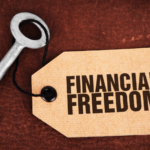
What is the FIRE Movement?
FIRE, an acronym for “Financial Independence, Retire Early,” is a financial movement that has been gaining traction over the years. It’s a lifestyle aimed at maximizing savings rates to achieve financial freedom sooner than traditional retirement ages. The FIRE movement branches out into four alternative FIRE concepts, each providing unique strategies to achieve the same ultimate goal of financial freedom and early retirement. These concepts offer tailored pathways to align with different income levels, lifestyles, and aspirations.
The Traditional FIRE Movement
The Traditional FIRE (Financial Independence, Retire Early) Movement is fundamentally about prudence and foresight. Traditional FIRE adherents save and invest aggressively – often upwards of 50% of their income – with the goal of retiring early, typically in their 40s or even 30s. They live frugally now to enjoy financial freedom later.
To make this aspiration a reality, those in the Traditional FIRE Movement adopt a lifestyle of calculated simplicity. They opt for economical living arrangements, favor public transport over personal vehicles, and prefer home-cooked meals to dining out. These choices are carefully made to boost savings and rapidly amass a substantial retirement fund.
The philosophy is straightforward yet profound: practice restrained spending now to enjoy an early and stress-free retirement later. The promise of early financial freedom outweighs the temporary sacrifices, presenting a rewarding trade-off for those walking the path of the Traditional FIRE Movement.
Alternative FIRE Concepts
1. Lean FIRE
The Lean FIRE philosophy is rooted in extreme frugality, appealing to those who relish the challenge of squeezing the most out of every dollar. Adherents to this method live on a tight budget, carefully monitoring their expenses both before and after retirement. Their objective is to maximize their savings and retire as swiftly as possible. Lean FIRE can be viewed as the pared-down, “no-frills” version of FIRE, a minimalist approach to life and money.
Followers of Lean FIRE often seek creative ways to reduce costs, such as growing their own food, DIY projects, or choosing low-cost hobbies. Despite the constraints, the goal is not merely survival but the attainment of a fulfilling life on limited resources. The ultimate reward? Rapid financial independence and the freedom to retire early.
2. Fat FIRE
Fat FIRE is the more opulent cousin of Lean FIRE. Those pursuing Fat FIRE aim to retire early, but without compromising on the lifestyle they enjoy. They plan for a retirement that allows more luxurious spending, factoring in higher costs for travel, dining, and other indulgences. This approach involves saving more, investing more, and crafting a budget that anticipates more considerable post-retirement spending.
The Fat FIRE strategy also includes a safety net for unexpected expenses and market volatility, offering a more secure and comfortable retirement. It appeals to those who prefer a robust financial buffer and a retirement lifestyle that mirrors or even surpasses their current standard of living.
3. Barista FIRE
Barista FIRE represents a balanced approach to the FIRE movement. It’s a semi-retirement strategy that involves continuing to work part-time or in lower-stress jobs to cover current expenses, while the bulk of the savings remain invested and growing for full retirement.
The term “Barista” doesn’t necessarily imply working as a coffee server but symbolizes any job that offers flexibility, lower stress, and potentially, personal fulfillment. It allows practitioners to transition gradually into retirement, continue engaging in meaningful work, and maintain social interactions, all while their investments mature.
4. Coast FIRE
Coast FIRE is about strategic timing. Adherents to this concept front-load their savings, investing enough early in their careers so they can shift gears later in life without the pressure to continue saving aggressively. The initial savings are left to grow, thanks to the power of compound interest, while they can work less stressful or more fulfilling jobs.
Coast FIRE offers financial peace of mind, allowing followers to focus on careers or hobbies that may not be high-paying but are more personally satisfying. This approach can make the journey to retirement a more relaxed and enjoyable experience.
Benefits and Challenges of Each FIRE Method
Lean FIRE: Embracing Minimalism
Lean FIRE is attractive for its raw simplicity and the tranquility of a minimalist lifestyle. Its appeal lies in a life that isn’t encumbered by excess, with every need met and every expense carefully justified. Lean FIRE allows individuals to free themselves from consumerism, reduce their ecological footprint, and focus on experiences over possessions.
However, Lean FIRE demands disciplined budgeting and frugality. It offers little room for financial surprises or unexpected life events. Additionally, it may require certain sacrifices, such as limiting vacations, dining out, or other forms of entertainment, which may not appeal to everyone.
Fat FIRE: The Luxury of Choice
Fat FIRE opens the door to a comfortable or even luxurious retirement. It allows for the maintenance of a high standard of living, covering travel costs, healthcare, hobbies, and other comforts or luxuries in retirement. It also provides a greater financial buffer to accommodate unexpected expenses.
The challenge with Fat FIRE lies in its requirements: a higher income level, aggressive saving, and astute investing. These can put significant pressure on individuals, particularly those with fluctuating income or those starting their FIRE journey later in life.
Barista FIRE: The Harmony of Work and Leisure
Barista FIRE cultivates a balance between the present moment and future aspirations, allowing individuals to enjoy life while still working towards financial independence. This approach permits ongoing income, social interactions, and the opportunity to pursue fulfilling, low-stress work.
However, Barista FIRE’s success hinges on finding suitable work that aligns with one’s skills, interests, and lifestyle, and covers living expenses. Depending on personal circumstances and the job market, this balance can be challenging to achieve.
Coast FIRE: The Assurance of Future Stability
Coast FIRE brings the comfort of knowing you’re financially secure for the future. By front-loading the savings, individuals can transition to less stressful, more satisfying work without worrying about additional savings.
The challenge with Coast FIRE lies in its early stages: it requires significant savings and wise investments early in life. Depending on when one starts, this approach can require an intense period of high earnings and aggressive saving, which might not be feasible for everyone. Additionally, it relies heavily on the consistent growth of investments, which can be influenced by market volatility.
Crafting Your Personalized FIRE Strategy: A Guide
Choosing your unique FIRE (Financial Independence, Retire Early) strategy isn’t just about crunching numbers. It’s a deeply personal process, a blend of your financial potential and personal aspirations. To make it easier, let’s break down the key considerations into a simple step-by-step guide:
- Assess Your Income: Your earnings dictate your saving and investing potential. Consider your current income and future earning prospects. This is your starting point. The greater your income, the more you can potentially save and invest, accelerating your journey to financial freedom.
- Reflect on Your Lifestyle Preferences: What kind of retirement life do you envision? The FIRE movement is flexible, designed to cater to different lifestyles.
- If you dream of a luxury-filled retirement, consider the Fat FIRE approach.
- If a minimalist lifestyle appeals to you, Lean FIRE might be your path.
- If balance between work and leisure is your aim, explore the Barista FIRE route.
- If you prefer to save aggressively early and then slow down, Coast FIRE could be your method.
- Evaluate Your Risk Tolerance: Investments come with risks. Think about your comfort level with market volatility.
- If you’re risk-averse and prefer a larger financial safety net, Fat FIRE could suit you better.
- If you’re comfortable living lean and adaptable to financial setbacks, Lean FIRE might be your calling.
- Identify Your Life Goals: What does financial independence mean to you? Is it about retiring early, maintaining a certain lifestyle, achieving work-life balance, or ensuring long-term financial security? These long-term visions will act as your compass, keeping you motivated and guiding your FIRE journey.
Remember, the FIRE movement isn’t a one-size-fits-all strategy. It’s a toolbox of principles that you can tailor to fit your life, creating a unique roadmap leading to your version of financial independence and early retirement. Embrace this flexibility, and you can carve out your own personalized FIRE journey.
Frequently Asked Questions (FAQs)
- What does FIRE stand for in finance?
- FIRE stands for Financial Independence, Retire Early. It’s a movement aimed at achieving financial freedom sooner than traditional retirement age.
- What’s the difference between Fat FIRE and Lean FIRE?
- Fat FIRE involves higher savings to afford a more comfortable or luxurious retirement, while Lean FIRE is about retiring as soon as possible through extreme frugality.
- What is Barista FIRE?
- Barista FIRE involves semi-retirement, where you work part-time or low-stress jobs to cover current expenses, allowing your investments to grow for full retirement.
- What is Coast FIRE?
- Coast FIRE involves saving and investing early enough in life that you don’t need to save more in the future. You then pursue less stressful or more fulfilling jobs while your investments grow.
- How can I choose the right FIRE method for me?
- Choosing the right FIRE method depends on several factors including your income, lifestyle preferences, risk tolerance, and life goals. It’s about finding a balance that suits you.
Additional References
- Wealth Solutions Hub:
- The Simple Path to Wealth by JL Collins: Available as an eBook, this work serves as a comprehensive guide to achieving financial independence.





